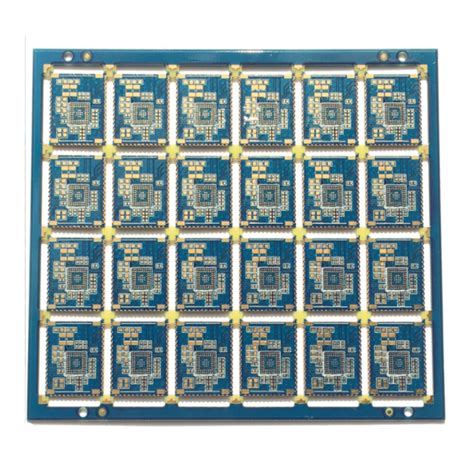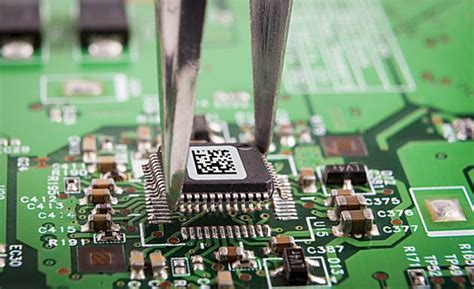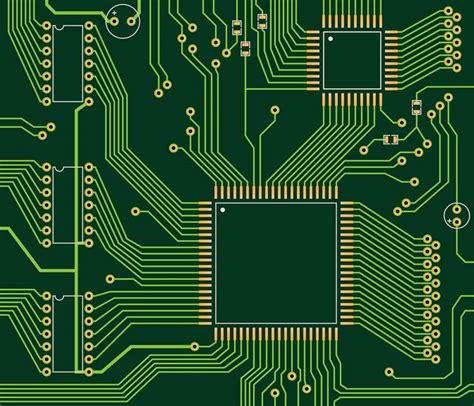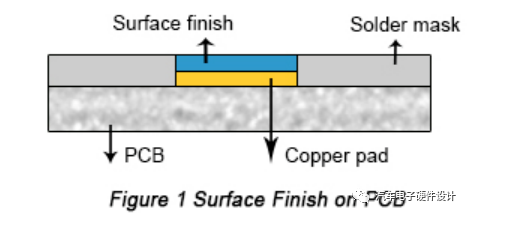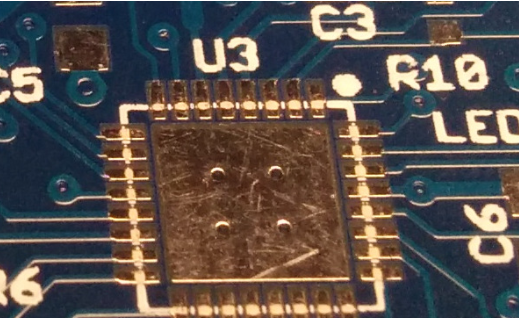Precision SMT PCB Assembly Solutions from Trusted Suppliers
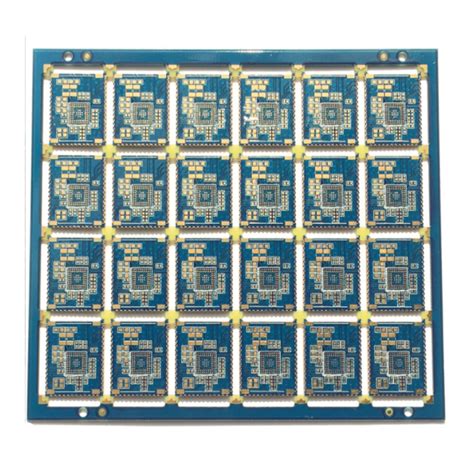
Key Takeaways
Selecting the right PCB assembly partner is critical for achieving optimal performance in modern electronics. Trusted PCBA suppliers leverage high-precision surface-mount technology (SMT) to ensure component placement accuracy within microns, minimizing defects and enhancing circuit reliability. These suppliers integrate advanced manufacturing processes, including automated optical inspection (AOI) and X-ray testing, to validate solder joint integrity and detect microscopic flaws.
A key advantage of partnering with certified PCB assembly providers lies in their adherence to ISO 9001:2015 and IPC-A-610 standards, which govern every stage of production—from solder paste application to reflow profiling. Below is a comparison of traditional versus modern PCBA quality control practices:
| Traditional Methods | Advanced Techniques |
|---|---|
| Manual visual inspection | 3D AOI with AI-driven anomaly detection |
| Basic functional testing | In-circuit testing (ICT) + boundary scan |
| Single-temperature reflow profiles | Dynamic thermal profiling systems |
Cost-effectiveness in PCB assembly hinges on balancing material selection, process optimization, and economies of scale. Leading suppliers employ design for manufacturability (DFM) analysis to preemptively address layout issues, reducing rework costs by up to 30%. For mission-critical applications, conformal coating and thermal management solutions further ensure long-term reliability under harsh operating conditions.
When evaluating PCBA partners, prioritize those with proven expertise in your industry’s compliance requirements, such as ISO 13485 for medical devices or IATF 16949 for automotive electronics. Transparent communication about turnaround times, material traceability, and failure analysis protocols remains essential for aligning expectations with project outcomes.
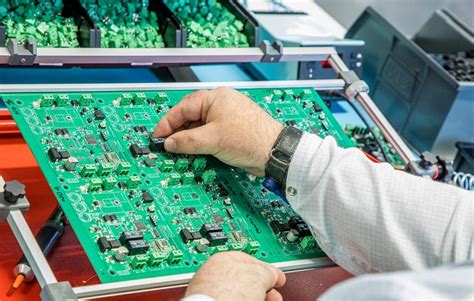
Key Benefits of Trusted SMT PCB Assembly Suppliers
Partnering with reputable PCB assembly suppliers ensures access to cutting-edge surface-mount technology (SMT) and streamlined production workflows. These providers leverage PCBA expertise to deliver high-density interconnect (HDI) boards with micron-level accuracy, minimizing defects and enhancing end-product reliability. By integrating automated optical inspection (AOI) systems, trusted suppliers maintain near-zero error rates during component placement, soldering, and final testing phases.
Tip: When evaluating suppliers, prioritize those offering turnkey PCB assembly services, which reduce logistical complexities by managing component sourcing, prototyping, and bulk production under one roof.
A key advantage lies in the scalability of services—established PCBA partners adapt to projects ranging from low-volume prototypes to high-volume manufacturing without compromising precision. Advanced suppliers employ thermally optimized reflow soldering techniques to prevent warping or solder bridging, critical for high-frequency or miniaturized devices. Additionally, their adherence to IPC-A-610/620 standards guarantees compliance with international quality benchmarks.
"Consistent quality in PCB assembly starts with rigorous process controls—trusted suppliers often achieve defect rates below 50 parts per million (PPM)."
Another critical benefit is supply chain resilience. Reliable PCB assembly vendors mitigate risks through dual-source component procurement and real-time inventory tracking, ensuring uninterrupted production even during market shortages. Their expertise in design for manufacturability (DFM) reviews further optimizes board layouts for cost-efficiency and performance, reducing time-to-market by up to 30%.
For industries requiring stringent certifications—such as automotive or medical electronics—established PCBA suppliers provide ISO 13485 or IATF 16949-compliant workflows, ensuring traceability and regulatory alignment. This combination of technical proficiency and operational transparency makes trusted partners indispensable for achieving long-term product viability in competitive markets.

High-Precision SMT Assembly Techniques Explained
Modern PCB assembly relies on advanced surface-mount technology (SMT) to achieve micron-level accuracy in component placement. Trusted suppliers employ automated optical alignment systems to ensure precise positioning of miniature components, such as 0201 resistors or QFN packages, onto high-density interconnect (HDI) boards. This process begins with solder paste stenciling, where laser-cut stencils deposit exact amounts of solder paste onto designated pads, minimizing voids or bridging during reflow.
A critical differentiator in PCBA quality lies in pick-and-place automation. High-end machines with vision-guided robotics achieve placement accuracies of ±25μm, handling up to 30,000 components per hour while maintaining ±0.01° rotational precision. For thermally sensitive components, suppliers utilize nitrogen-reflow ovens to create inert atmospheres, reducing oxidation and improving joint reliability. Post-reflow, 3D X-ray inspection validates solder joint integrity beneath BGA or QFN packages, detecting hidden defects like head-in-pillow or insufficient wetting.
To ensure consistency, leading PCB assembly providers implement statistical process control (SPC), monitoring variables from solder paste viscosity to oven temperature profiles. Advanced factories integrate machine learning algorithms to predict and correct process deviations in real time, reducing defect rates below 50ppm. For mixed-technology boards requiring through-hole components, selective soldering systems combine precise flux application with targeted wave soldering, avoiding thermal stress on adjacent SMT parts.
The interplay of these techniques enables PCBA suppliers to meet IPC-A-610 Class 3 standards for mission-critical applications, from aerospace to medical devices. By pairing ultra-fine-pitch placement capabilities with cross-sectional analysis for failure mode investigation, manufacturers deliver assemblies that withstand rigorous environmental testing, including thermal cycling and vibration simulations.
Advanced Manufacturing Processes in PCB Assembly
Modern PCB assembly relies on sophisticated manufacturing methodologies to meet the escalating demands for miniaturization and performance in electronics. Leading PCBA suppliers employ surface mount technology (SMT) as the backbone of their production workflows, integrating automated pick-and-place systems capable of positioning components as small as 01005 packages with micron-level accuracy. These systems are paired with advanced reflow soldering ovens that utilize precise thermal profiling, ensuring optimal solder joint formation while mitigating thermal stress on sensitive components.
A hallmark of advanced manufacturing is the adoption of automated optical inspection (AOI) systems, which perform real-time defect detection during PCB assembly. By leveraging high-resolution cameras and machine learning algorithms, AOI identifies issues like solder bridging, misaligned components, or insufficient solder paste deposition—critical for maintaining yield rates in high-volume production. For ultra-complex designs, suppliers may integrate X-ray inspection (AXI) to scrutinize hidden connections, such as those in ball grid array (BGA) packages.
Further innovation lies in the use of laser-direct imaging (LDI) for solder mask application, which replaces traditional phototooling to achieve finer circuit patterns and tighter tolerances. This process not only accelerates prototyping but also enhances consistency in mass production. Additionally, traceability systems embedded within PCBA lines track every component from procurement to final testing, ensuring compliance with industry-specific standards like ISO 9001 or IPC-A-610.
To address evolving material challenges, cutting-edge facilities utilize nitrogen-reflow environments to minimize oxidation during soldering, particularly for high-reliability applications. Meanwhile, design for manufacturability (DFM) software collaborates with engineers to preemptively resolve layout conflicts, reducing iterative delays. By harmonizing these technologies, trusted suppliers deliver PCB assembly solutions that balance precision, scalability, and adaptability—cornerstones for next-generation electronic devices.
Quality Control Standards for Reliable PCB Production
In the realm of PCB assembly, maintaining rigorous quality control standards is paramount to ensuring consistent performance and longevity of electronic products. Trusted PCBA suppliers implement multi-layered inspection protocols, beginning with automated optical inspection (AOI) to detect soldering defects, component misalignment, and trace integrity issues. Advanced X-ray inspection systems further analyze hidden flaws in ball grid array (BGA) components and multilayer boards, addressing challenges that surface-level examinations might miss.
Material verification forms another critical pillar, with certified suppliers adhering to IPC-A-610 and J-STD-001 standards for solderability and component placement accuracy. Batch-level traceability systems track raw materials from procurement to final assembly, minimizing risks associated with counterfeit or substandard parts. For high-reliability applications, such as aerospace or medical devices, thermal cycling tests and environmental stress screening (ESS) simulate extreme operating conditions to validate product durability.
Process control extends beyond inspections, incorporating statistical process control (SPC) methodologies to monitor production variables like solder paste viscosity and reflow oven temperature profiles. Real-time data analytics enable rapid adjustments, ensuring each PCBA batch meets predefined tolerances. Additionally, suppliers often maintain ISO 9001 and IATF 16949 certifications, reflecting their commitment to systematic quality management and continuous improvement.
By integrating these protocols, PCB assembly providers mitigate risks of field failures while aligning with industry-specific compliance frameworks, ultimately delivering high-yield, reliable solutions for mission-critical electronics.

Optimizing Performance Through SMT Assembly Solutions
Modern electronics demand PCB assembly processes that balance speed, accuracy, and reliability. SMT (Surface Mount Technology) enables manufacturers to achieve this equilibrium by placing components directly onto printed circuit boards with micron-level precision. High-density designs, common in IoT devices and automotive systems, rely on PCBA workflows that integrate automated pick-and-place systems, reflow soldering, and advanced inspection protocols. These processes minimize human error while ensuring consistent electrical performance across high-volume production runs.
A critical factor in performance optimization lies in thermal management. SMT PCB assembly leverages soldering techniques that maintain precise temperature profiles, reducing risks of thermal stress on sensitive components like BGAs or QFNs. Trusted suppliers enhance this further by pairing PCBA with materials such as low-loss laminates or copper-core substrates, which improve heat dissipation in power-intensive applications.
Another performance driver is the synchronization of PCB assembly with design-for-manufacturing (DFM) principles. By analyzing CAD files early, suppliers can recommend pad size adjustments or component orientation changes to prevent solder bridging or tombstoning. This proactive approach ensures signal integrity in high-frequency boards used in 5G infrastructure or medical imaging systems.
Quality assurance layers, including AOI (Automated Optical Inspection) and X-ray verification, further refine outcomes. These systems detect micro-cracks, misaligned resistors, or insufficient solder paste volumes—defects that might compromise long-term reliability. For mission-critical industries like aerospace, such scrutiny is non-negotiable, as even a 0.1mm deviation could alter electromagnetic compatibility.
Selecting PCB assembly suppliers with expertise in mixed-technology boards (combining SMT and through-hole components) also contributes to performance gains. This hybrid approach accommodates legacy connectors or oversized transformers while maintaining the space-saving benefits of surface-mount designs. Advanced suppliers further optimize throughput using modular production lines that switch between prototype batches and mass production without recalibration delays.
By aligning PCBA strategies with end-use requirements—whether for miniaturized wearables or industrial control systems—manufacturers achieve not just functional boards, but systems that excel in energy efficiency, operational lifespan, and environmental resilience.

Cost-Effective SMT PCB Supplier Selection Guide
Selecting a cost-effective SMT PCB supplier requires balancing technical expertise with budget considerations without compromising quality. Begin by evaluating suppliers’ capabilities in PCB assembly processes, focusing on their surface-mount technology (SMT) equipment calibration and throughput efficiency. A reliable PCBA partner should demonstrate proficiency in handling fine-pitch components and mixed-technology boards, ensuring compatibility with both high-volume and low-volume production runs.
Prioritize suppliers offering Design for Manufacturing (DFM) analysis as part of their service portfolio. This proactive step minimizes redesign costs and accelerates time-to-market by identifying potential assembly challenges early. For example, optimized panelization strategies can reduce material waste, directly impacting overall project costs.
Equally critical is assessing material sourcing networks. Suppliers with established partnerships with certified component distributors mitigate risks of counterfeit parts and ensure access to high-quality substrates and solder alloys. Transparent pricing models that break down PCB assembly costs—including stencil fabrication, solder paste application, and AOI inspection—help avoid hidden fees.
Certifications such as ISO 9001 and IPC-A-610 compliance remain non-negotiable indicators of quality assurance. However, cost-conscious buyers should also verify suppliers’ adherence to industry-specific standards (e.g., automotive IATF 16949 or medical ISO 13485) if applicable, as non-compliance can lead to costly redesigns or recalls.
Scalability is another key factor. A PCBA provider with modular production lines can seamlessly transition from prototyping to mass production, eliminating the need for costly supplier changes mid-project. Additionally, inquire about value-added services like in-house testing or conformal coating, which reduce reliance on third-party vendors and streamline logistics.
Finally, leverage supplier benchmarking tools to compare total cost of ownership (TCO) rather than upfront quotes. Factors such as lead times, rework policies, and geographic proximity for reduced shipping expenses significantly influence long-term affordability. By aligning technical requirements with financial objectives, businesses can secure PCB assembly solutions that deliver both precision and cost efficiency.

Ensuring Reliability in Electronic Production Services
Reliability in PCB assembly hinges on systematic quality assurance protocols and proven manufacturing methodologies. Leading SMT PCB assembly suppliers implement multi-stage inspection systems that span from component procurement to final product validation. By integrating automated optical inspection (AOI) and X-ray testing, these providers detect microscopic defects in PCBA units, such as solder bridging or misaligned components, which are critical for high-density electronic designs.
Traceability remains a cornerstone of dependable production, with advanced suppliers employing barcode tracking and digital twin technologies. These systems log real-time data across PCB assembly stages, enabling rapid root-cause analysis if discrepancies emerge. For mission-critical applications, environmental stress screening (ESS) simulates extreme operating conditions—thermal cycling, vibration, and humidity tests—to validate long-term performance under stress.
Material selection further reinforces reliability. Trusted partners adhere to IPC-A-610 and J-STD-001 standards, specifying solder alloy compositions, substrate thickness, and surface finishes. This compliance ensures PCBA durability against corrosion, thermal expansion, and mechanical wear. Additionally, just-in-time inventory management minimizes component aging risks by aligning material procurement with production schedules.
To maintain consistency, top-tier SMT PCB assembly suppliers adopt closed-loop process control systems. Statistical process control (SPC) tools analyze production metrics like solder paste volume and reflow oven profiles, automatically adjusting parameters to stay within defined tolerances. This proactive quality management approach reduces variability, particularly in high-mix, low-volume manufacturing environments.
Collaborative supplier partnerships further enhance reliability through design for manufacturability (DFM) audits. By reviewing CAD files and Bill of Materials (BOM) during prototyping, engineers optimize layouts for automated assembly, minimizing manual rework. Such preemptive measures align with the zero-defect objectives of aerospace, medical, and automotive industries, where PCB assembly failures carry significant consequences.
SMT PCB Suppliers Meeting Industry Compliance Demands
Navigating the complex landscape of industry compliance is a critical challenge in electronics manufacturing, particularly for PCB assembly services. Leading SMT PCB assembly suppliers prioritize adherence to global standards such as RoHS, REACH, and IPC-A-610 to ensure their PCBA processes align with environmental, safety, and performance requirements. These suppliers implement rigorous documentation systems, from material traceability to failure mode analysis, enabling seamless audits and certifications for aerospace, automotive, and medical applications.
To meet stringent compliance demands, trusted providers integrate automated optical inspection (AOI) systems with real-time data logging, ensuring every solder joint and component placement meets predefined tolerances. This approach minimizes deviations in high-precision SMT assembly while maintaining compliance with ISO 9001 and IATF 16949 frameworks. For instance, lead-free soldering techniques are now standard in PCB assembly workflows, addressing both regulatory mandates and sustainability goals.
Beyond technical alignment, top-tier suppliers invest in continuous training programs to keep engineering teams updated on evolving standards like UL certification updates or GDPR-related data security protocols for IoT-enabled PCBA products. By partnering with such suppliers, manufacturers mitigate risks of non-conformance penalties and streamline time-to-market for compliant electronic devices. This synergy between advanced SMT assembly capabilities and proactive compliance management underscores the value of collaborating with certified PCB assembly experts in today’s regulated industrial ecosystem.
Conclusion
Selecting the right PCB assembly partner remains a strategic decision that directly impacts the success of electronic manufacturing projects. Trusted SMT PCB assembly suppliers distinguish themselves through precision, scalability, and adherence to rigorous quality control protocols, ensuring that PCBA outputs meet both functional and regulatory expectations. By integrating advanced manufacturing techniques—such as automated optical inspection (AOI) and 3D solder paste testing—these suppliers minimize defects while optimizing production efficiency, a critical advantage in industries where performance consistency is non-negotiable.
When evaluating PCB assembly providers, prioritize partners that demonstrate transparency in their processes and offer end-to-end traceability. This not only reduces risks associated with component sourcing but also aligns with compliance requirements for sectors like automotive or medical electronics. Additionally, the ability to balance cost-effectiveness with high-precision SMT assembly ensures projects stay within budget without compromising on reliability.
As technology evolves, suppliers leveraging innovations in PCBA workflows—such as IoT-enabled process monitoring or AI-driven defect detection—will continue to set industry benchmarks. Ultimately, the collaboration between manufacturers and SMT PCB assembly experts fosters innovation, enabling the delivery of next-generation electronic solutions that meet escalating demands for speed, durability, and functionality.
FAQs
What factors should I consider when choosing an SMT PCB assembly supplier?
When selecting a PCB assembly partner, prioritize suppliers with certifications like ISO 9001 and IPC-A-610, which validate adherence to quality standards. Look for expertise in handling high-density interconnect (HDI) designs and advanced surface-mount technology (SMT) processes. Transparent communication about lead times, testing protocols, and material traceability is equally critical.
How do trusted suppliers ensure quality control in PCBA production?
Reputable PCBA providers implement multi-stage inspections, including automated optical inspection (AOI) and X-ray testing, to detect soldering defects or component misalignments. They often follow statistical process control (SPC) methods to minimize variability, ensuring consistent output. Environmental stress screening (ESS) may also be used to validate product reliability under extreme conditions.
What industries benefit most from precision SMT assembly solutions?
Industries requiring miniaturized, high-performance electronics—such as medical devices, aerospace, automotive, and telecommunications—rely heavily on advanced PCB assembly techniques. These sectors demand tight tolerances, low failure rates, and compliance with specialized regulations like RoHS or ITAR.
Can SMT assembly processes support mixed-technology PCB designs?
Yes, modern PCBA workflows integrate SMT with through-hole technology (THT) for hybrid designs. Suppliers use selective soldering systems and precision placement equipment to manage complex layouts, ensuring compatibility with both surface-mount and leaded components.
How do suppliers optimize costs without compromising PCB performance?
Strategic material sourcing, panelization to reduce waste, and lean manufacturing principles help lower expenses. Many partners offer design-for-manufacturability (DFM) reviews to identify cost-saving opportunities early, such as simplifying component footprints or standardizing layer stacks.
What certifications indicate a supplier’s commitment to industry compliance?
Key certifications include ISO 13485 (medical devices), IATF 16949 (automotive), and UL listing for safety-critical applications. Suppliers adhering to IPC Class 3 standards demonstrate capability for high-reliability products, such as aerospace or defense systems.
Ready to Elevate Your PCB Project?
For tailored PCB assembly solutions that align with your technical and compliance requirements, please click here to connect with experts specializing in high-performance PCBA services.

